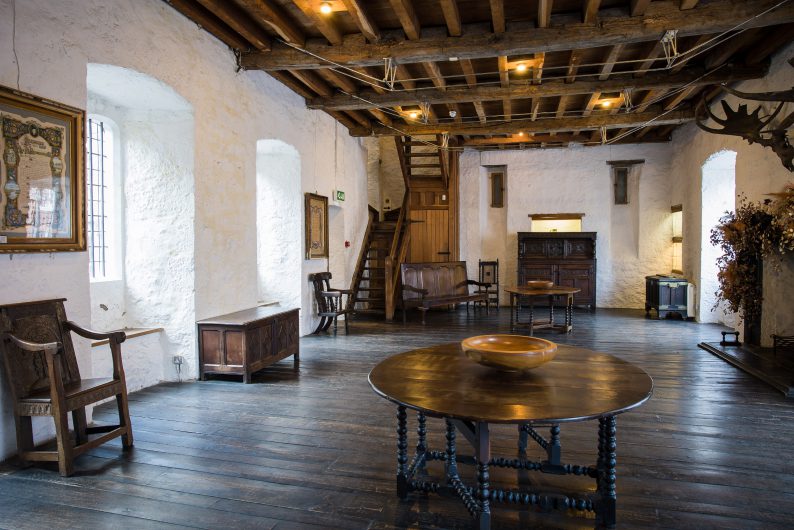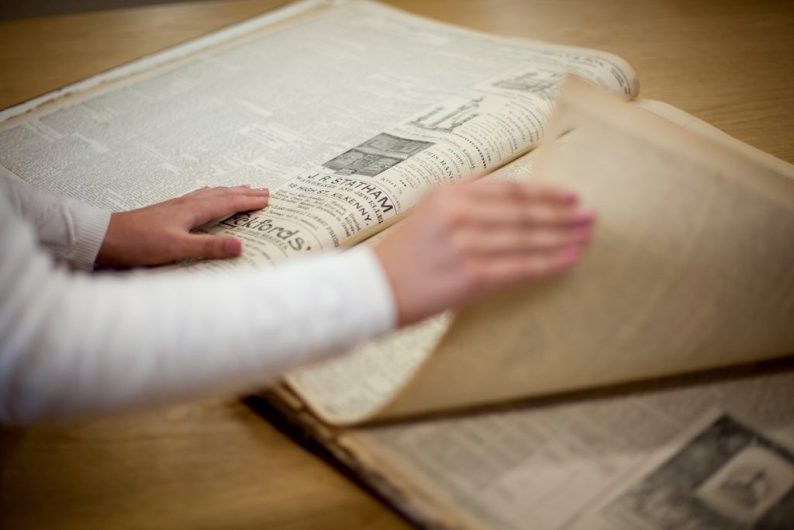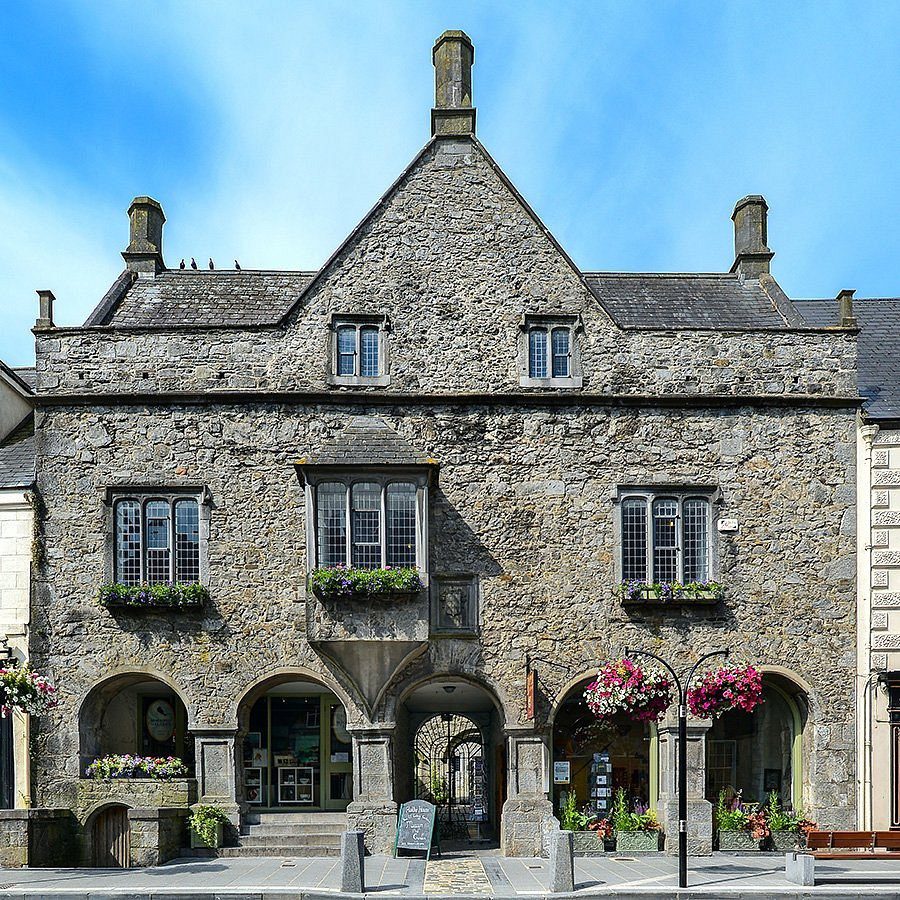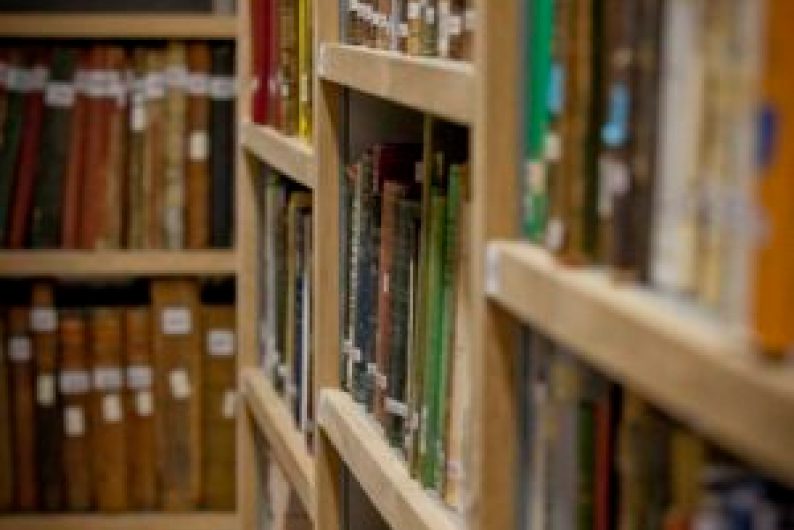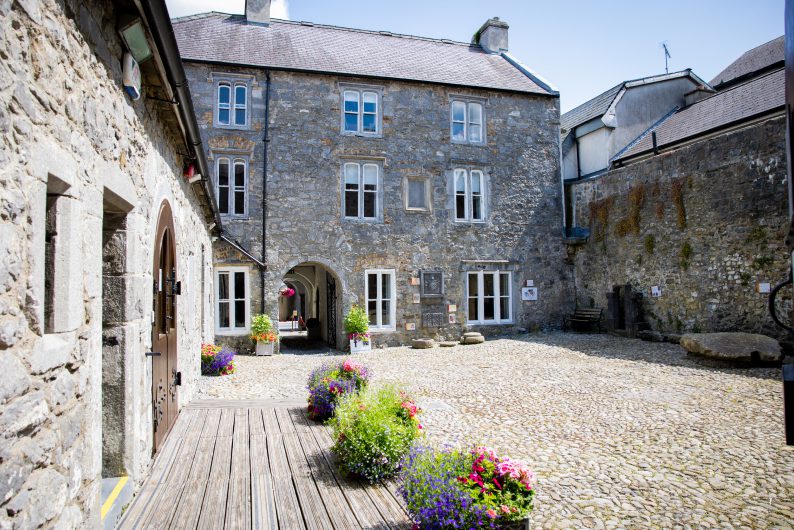Medieval architecture
Step back in time and
into the Great Hall of the Rothe family.
Marvel at the restoration of the rooms, the architectural ceilings and spiral staircases and get a sense of what life was like here for one of Kilkenny’s most prominent merchant families. Imagine the hustle and bustle of family life centred around the great kitchen fireplace and the stroll in the well-designed garden that reflected John Rothe’s status and desire to impress.

Rothe House & Garden tours
Our Tours
Guided Tour
Tour Information:
The best way to experience Rothe House is on a guided tour with one of our expert guides. Hear the fascinating story of the rise and fall of the Rothe family, and the journey to restoration for their ‘once noble mansion’. Enjoy the garden at your leisure after your tour.
11.30 and 14.30
11.30 and 14.30
Self Guided Tour
Tour Information:
If you prefer to explore at your leisure you can take a self-guided visit anytime during opening hours. Enjoy the history, architecture and artefacts throughout the house, courtyards and garden at your own pace.

Museum Must-sees
A Treasure Trove of Discoveries
History & Background
Our History
-
Middle Ages
1594
Built in 1594, Rothe House was the business place and family home of John Rothe Fitzpiers. Married to Rose Archer, theirs was a union between two of Kilkenny’s most prominent merchant families. Along with a small cohort of wealthy merchant families they were influential in all aspects of Kilkenny’s business, political, civic and social affairs. This ‘great mansion’ was built to reflect their status in society and was a symbol of their wealth and position.
-
Confederation and
Cromwell’s time1621
On his death in 1621, John’s son Peter inherited the house and was involved in the tumultuous political situation that was evolving in Kilkenny at the time. When Oliver Cromwell arrived in Kilkenny the Rothe family were banished to the west of Ireland where Peter died in 1654.
-
1700
Over the following centuries, Rothe House fell from grace and went through years of neglect before its restoration. It was used as a brew house and maltings towards the end of the 1700s, before it became a school.
-
19th Century
1840
Over the years, there was also an iron foundry, a public house, a butcher’s shop, and a slaughterhouse on this site. By the time of the Great Famine in the 1840s, the building was a cramped, overcrowded tenement ‘unfit for human habitation’. Despite this period of neglect it was still recognised as an important landmark in Kilkenny City. The First House was purchased in 1898 by Timothy O’ Hanrahan from Co. Cork who undertook the first restoration.
-
20th Century
1962
In 1962 Rothe House was bought by the Kilkenny Archaeological Society as the headquarters of the Society and as a place to exhibit its collection of artefacts to the public.
-
21st Century
2004
Rothe House Trust CLG was established in 2004 to manage the property on a daily basis.
VISIT US
Explore Rothe House, a
historic gem in Kilkenny.
Open daily with guided and self-guided tours available. Discover the rich history, beautiful gardens, and unique collections. Located at 16 Parliament Street in the heart of Kilkenny city. More details for your visit including opening hours and ticket prices can be found here.
Photo album
Gallery
